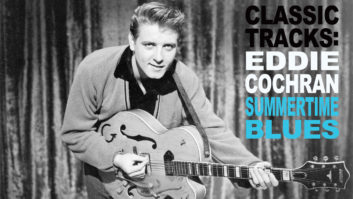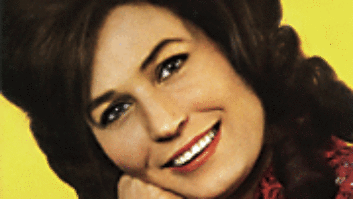When most people show off their upscale personal recording studios, they’ll sometimes brag about how much they spent on it. When songwriter Chuck Cannon and his recording artist wife and partner, Lari White, take you through theirs, they’re especially proud about what they didn’t spend. Maybe it’s the onset of recession or, perhaps, just the native frugality of the country music culture. But when all is said and done, Cannon and White got more than they had initially bargained for, but in the positive sense of that phrase.
“Every bit of this studio was mapped out over and over again before we ever started construction,” says White, whose career as an artist on RCA Records Nashville included three Top 10 singles in the mid-1990s. “By the time we started building, in 1999, all of the transformations the design was going to go through had been done on paper. That’s the secret of not tripling your costs. And the money we didn’t spend on changing designs after starting to build, we were able to put into the details.” And, she adds, watching out for the pro audio equivalent of yard sales also works. “I got all of the rheostats from a closing studio for like 50 bucks each!” she exclaims. “It’s a good way to balance things: You salvage one thing here, and that helps you buy something new there.” Doors, chairs, even the rubber used to float the floors came from other studios. The result is a $200,000 facility that looks like a million.
The Holler — the Appalachian pronunciation of “hollow” — is aptly named. It sits in a secluded cove between two of the large hills that border Nashville’s western fringe, inside a 2,000-square-foot former storage building on the couple’s 47-acre property. The 20×15 control room sits at the nexus of three iso booths, a 20×18 main drum room with an 18-foot ceiling and a lounge/kitchen area. Custom cabinetry in the control room holds a Yamaha 02R digital mixer, and outboard gear includes Apogee filters, GML and Millennia mic pre’s, and Fairchild LA-3A EQs. The main multitrack format is a 24-track Digidesign Pro Tools system, sold and installed by Frank Conway of Audio-One in Nashville. Monitoring is by Dynaudio M1 speakers, powered by a Crown Macro Reference amp. The microphone collection includes high-end Telefunken, Neumann, AKG and Audio-Technica units.
There wasn’t a single designer for this facility; rather, it’s the sum total of imagination, an experienced construction team’s ingenuity and input from a few of the studio owners whom White and Cannon have known during their careers. It didn’t hurt, either, that White has a degree in music engineering technology from the University of Miami. “I at least had some good basic design sense instilled in me,” says White. “The design here was a matter of pooling resources.”
Cannon, a successful songwriter who has penned hits for Boyzone, Trisha Yearwood, Lone Star, Dolly Parton and Randy Travis, among others, wanted a studio that would serve both as a songwriting suite and as a music recording facility. “It had to be simple enough for one person to come in and use it, yet sophisticated enough to make records in,” he explains.
While Cannon and White specified and imagined, their ideas were cobbled together by a team headed by studio builder Chris McCullum, who had also built the spacious Tracking Room near Music Row. Cannon and White found McCullum and his crew to match perfectly with their vision. “Ten weeks into the project, and we were ahead of schedule and under budget,” Cannon recalls.
The Holler is as comfortable as it is productive, adding a lot of the details that were collateral benefits from staying under budget. A reproduction of Michelangelo’s Sistine Chapel fresco adorns the ceiling of the main recording room. Paisley wall fabrics are matched by the main computer monitor’s screen-saver.
The Holler is a dream come true for the creative duo, but particularly for White, who says that she had envisioned a place like this for years: “Ever since I was in college, I wanted a house in the country, in the woods, with a glass-covered bridge that spanned a creek and on the other side was a studio,” she waxed. “We’ve got everything but the creek and the bridge.”
Dan Daley is Mix‘s East Coast editor.





